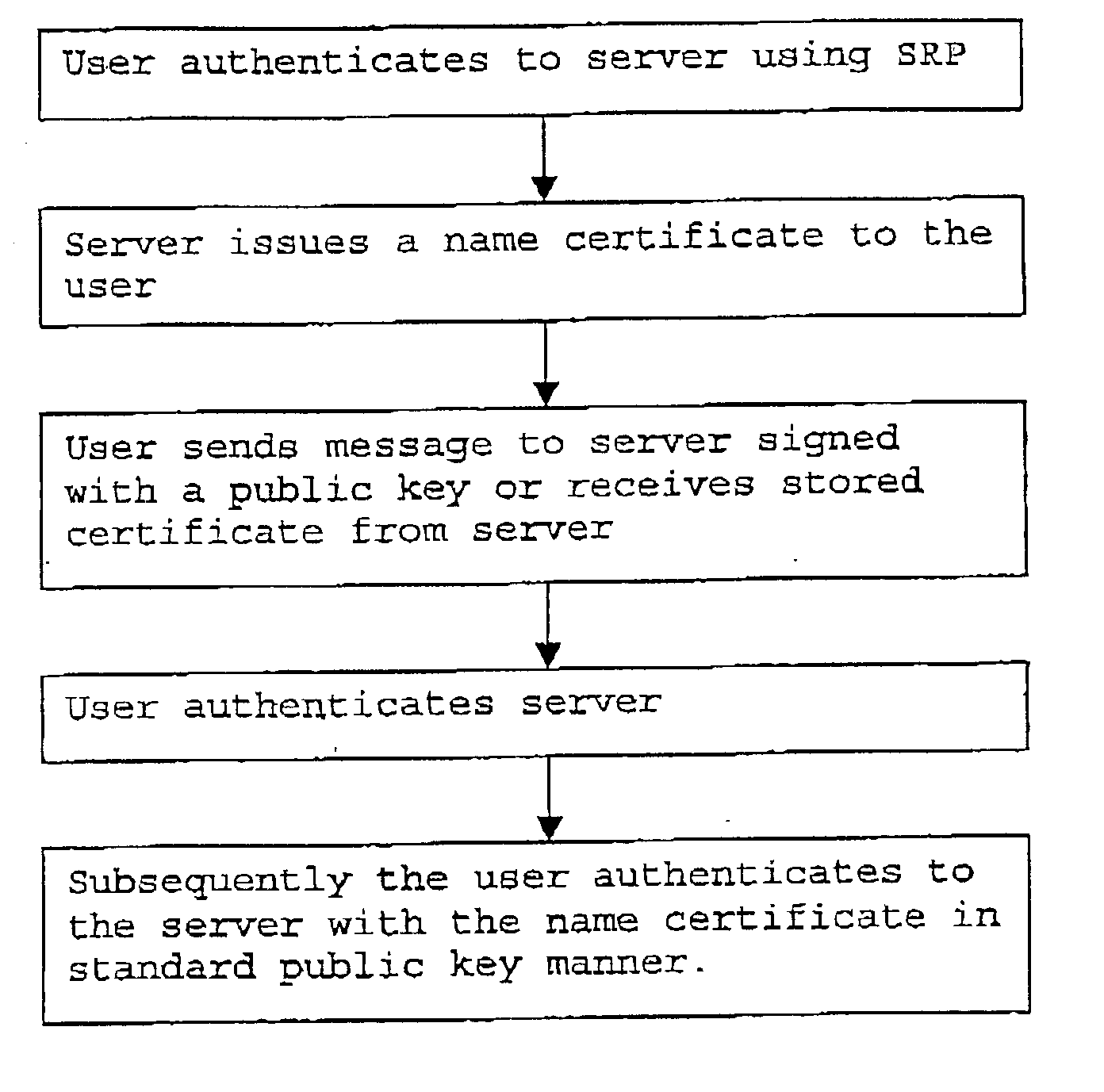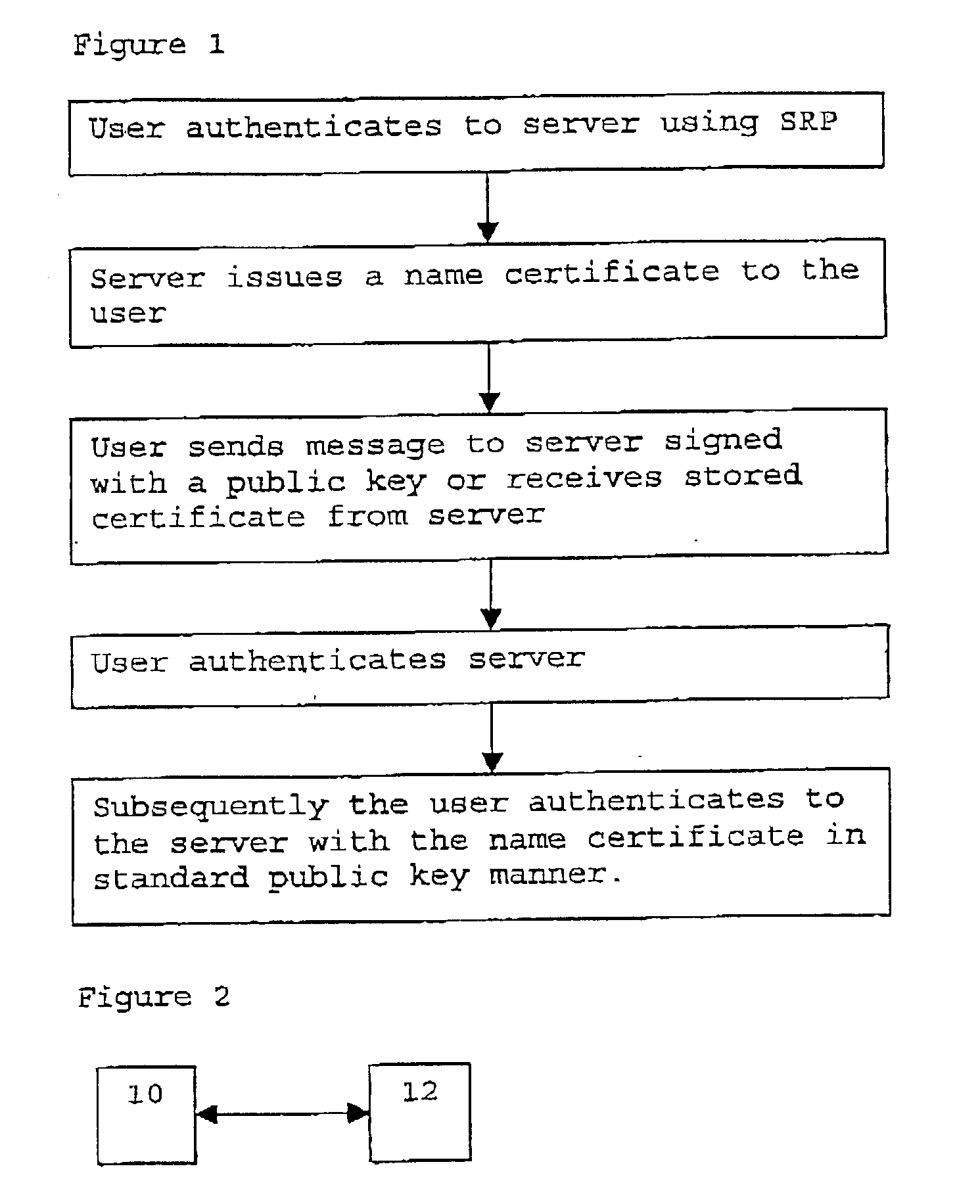Authentication for computer networks
a technology of computer networks and authentication, applied in the field of authentication for computer networks, can solve the problems of preventing the use of public key authentication as widely, storing public and private keys on the machine, and not being able to achieve the effect of installing key pairs,
- Summary
- Abstract
- Description
- Claims
- Application Information
AI Technical Summary
Problems solved by technology
Method used
Image
Examples
Embodiment Construction
[0030] A method to allow a user to authenticate himself on a server of which he does not know the domain name makes use of a new class of authentication protocols, generally termed hybrid authentication protocols or simply hybrid protocols. A hybrid protocol combines two techniques--a shared secret or symmetric technique is combined with an asymmetric technique, such as Diffie-Hellman key exchange. One example of the hybrid authentication protocols is encrypted key exchange (EKE)--see e.g. S. M. Bellovin and M. Merritt, Encrypted Key Exchange: Password-Based Protocols Secure Against Dictionary Attacks", Proceedings of the 1992 IEEE Computer Society Conference on Research in Security and Privacy, May 1992. Another example is a secure remote password (SRP). SRP is discussed in IETF RFC2945 (see e.g. wwm.ietf.org / rfc / rfc2945.txt or T. Wu, The Secure Remote Password Protocol, in Proceedings of the 1998 Internet Society Network and Distributed System Security Symposium, San Diego, Calif....
PUM
 Login to View More
Login to View More Abstract
Description
Claims
Application Information
 Login to View More
Login to View More - R&D
- Intellectual Property
- Life Sciences
- Materials
- Tech Scout
- Unparalleled Data Quality
- Higher Quality Content
- 60% Fewer Hallucinations
Browse by: Latest US Patents, China's latest patents, Technical Efficacy Thesaurus, Application Domain, Technology Topic, Popular Technical Reports.
© 2025 PatSnap. All rights reserved.Legal|Privacy policy|Modern Slavery Act Transparency Statement|Sitemap|About US| Contact US: help@patsnap.com


